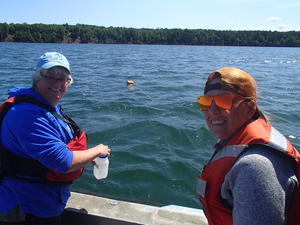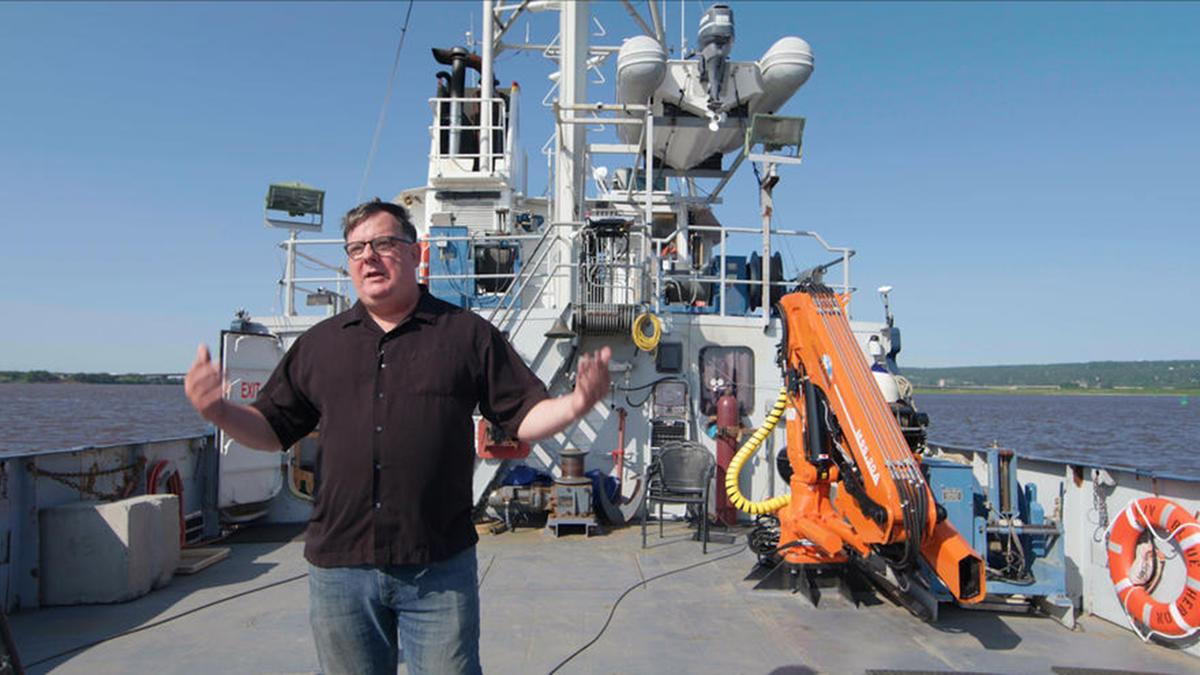"No one expected the quantity of blue-green algae that we saw in Lake Superior in August, 2018,” says Robert Sterner, director of UMD’s Large Lakes Observatory (LLO).
The high abundance of algae was observed for the first time in 2012 on the shoreline of Lake Superior in Wisconsin near the Apostle Islands. "Blooms of varying size occurred in subsequent years, but the bloom that was observed in 2018 was by far the largest,” Sterner says.
The 2018 Lake Superior event, as massive as it was, was not as large as events in other U.S. states. For instance, a 2014 occurrence of toxic algae shut down the water supply in Toledo, Ohio. More recently, there was a toxic algal bloom known as the “red tide” which was seen for nine months in the waters off southwestern Florida. Still, the Lake Superior blue-green algae caused concern, coming as it did in the normally clear Lake Superior waters.

Sterner is working with Kaitlin Reinl, a Ph.D. candidate at the University of Minnesota Duluth and a member of the LLO research team. She studies cyanobacteria, such as blue-green algae, and she is working to identify the locations where the initial bloom reproductive material is coming from.
THE CAUSES
“There are a few things we know,” Sterner says. “Both of the larger blooms occurred after major rain storms, which were called 500-year storms by the National Weather Service."

Heavy nutrients are one of the conditions that cause the growth of algae. Even though nutrient runoff from farmland isn’t prevalent around Lake Superior, Sterner points out that nutrient runoff from other sources, like forests, may still be a factor. “The data will tell us which of these conditions are coincidences and which are causes.”
Rain and nutrients aside, another key factor is that Lake Superior is warming. In fact, Lake Superior's summer temperatures are heating up at a faster rate than the average of lakes around the planet.
DISCOVERY
Sterner and his team took advantage of the fact they were already working on the region of the lake where blooms occurred. They teamed up with the Wisconsin Department of Natural Resources and the National Park Service. Less than a year after the blue-green algae appeared in 2018, they had more equipment installed measuring the conditions in the water of Lake Superior and the nearby shoreline. If another incident is detected, these instruments should produce the data to provide important clues about what is causing the blooms.

A Swenson College of Science and Engineering staff member Sandra Brovold with Water Resources Science Ph.D. candidate Kaitlin Reinl
“We’re measuring data onshore and offshore,” Sterner says. He's placed equipment attached to moorings in relatively shallow water near the Wisconsin shore and also within tributaries that feed into Lake Superior.
They are studying the nutrient delivery to the lake, trying to determine exactly what factors are in place at the time blue-green algae appears. The team conducts bi-weekly sampling of sites on land and at the mooring site.
"We are paying attention to the land/lake connection," Reinl says. "We know the influx is coming from the coastal lakes and rivers, and it can be a potential source of cyanobacteria. We have to be extra vigilant with our work because, as we have seen in other bodies of water in the U.S., blue-green algae can become toxic."
Reinl does more than observe the lake. She brings all of the components into the lab. She is attempting to replicate conditions to determine the exact situations favorable to blue-green algal growth. "Our research indicates that cells exist in rivers," she says. "The rivers have conditions that are not suitable for growth, and when those cells reach the warmer waters and higher light levels in the nearshore, cyanobacteria may grow. We still don’t know with absolute certainty that this is the main process leading to the appearance of blooms in Lake Superior."
Sterner says, "We’re looking at every possible factor, from the standpoint of temperature, algal abundance, and other parameters that will tell us about what is causing these blooms. We’re determined to learn all we can.”
If another incident is detected, Sterner is ready to produce the data behind the surrounding conditions. “We’re concerned,” he says. “The 2018 event was a very unusual appearance of blue-green algae. Unfortunately, we believe these events will continue. The reputation of the great Lake Superior is at stake.”
SAVE THE DATE: The Blue Heron will be docked outside the Great Lakes Aquarium, 353 Harbor Drive, in Downtown Duluth on Friday, August 30, 2019 from 12-4 pm. Kaitlin Reinl will present a talk to the public on entitled "Potential Sources of Cyanobacteria in Lake Superior.”
About the Large Lakes Observatory
About the Swenson College of Science and Engineering
Photos — Top Wide Photo: Robert Sterner on board the RV Blue Heron. Center wide photo: The Blue Heron on Lake Superior. Bottom wide photo: An underwater diver checks equipment at the mooring site near the Wisconsin shore (photo by Brenda LaFrancois, Nat'l Park Service).
